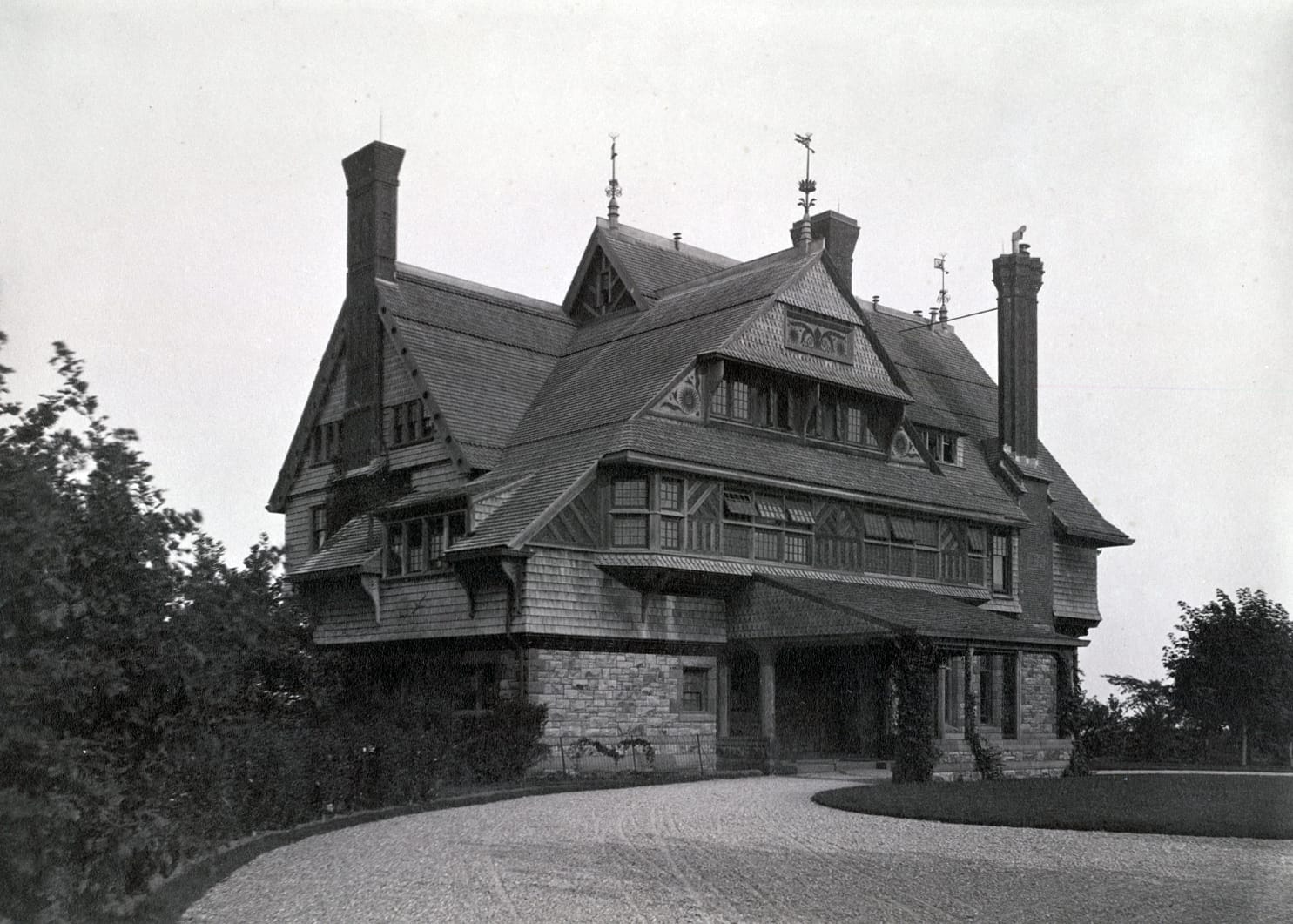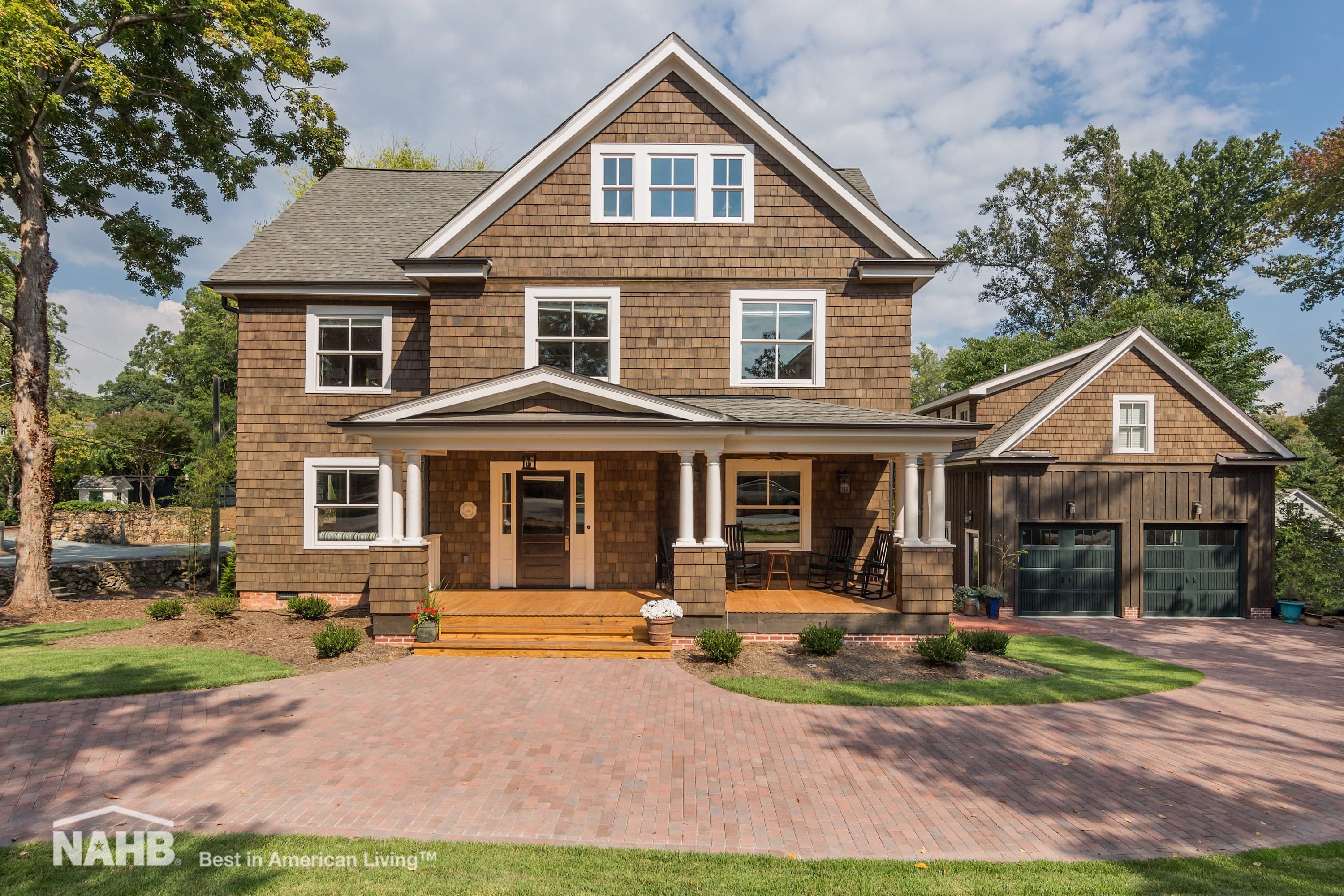The Shingle Style is an American architectural style that evolved out of the Queen Anne style. While it borrows wide porches and asymmetrical forms from Queen Anne, it is more horizontal and all parts of the building are unified by the shingle covering. Born in the coastal towns of New England in the 1880’s it first began to appear in fashionable resort towns such as Cape Cod, Long Island, and Newport as a result of the region’s antiquarian interests. Important practitioners of the style were architects Willis Polk, H.H. Richardson, Bruce Price, William Ralph Emerson, John Calvin Stevens, and McKim, Mead and White. The style was named, together with the Stick Style, by Yale University architectural historian Vincent Scully in his 1949 doctoral dissertation The Cottage Style.

By Henry Hobson Richardson (American, 1838-1886) – http://www.flickr.com/photos/cornelluniversitylibrary/3678920450/in/set-72157620818011784/, Public Domain, https://commons.wikimedia.org/w/index.php?curid=7496340
The style features prominent, complex roofs, hipped or eyebrow dormers, circular turrets and verandas, and, most importantly, the entire building is covered in wood shingles. When a contrasting material is used, for columns or foundations, a rough-surfaced course stone or fieldstone rubble is used. The impression of the passage of time is enhanced by the use of shingles. Some architects, in order to attain a weathered look on a new building, had the cedar shakes dipped in buttermilk, dried and then installed, to leave a grayish tinge to the façade.

Photography By Jim Somerset

Photography By Lauren Croniser

